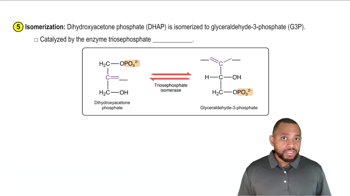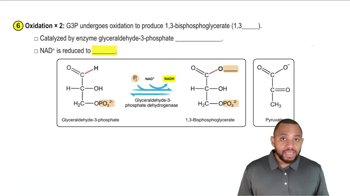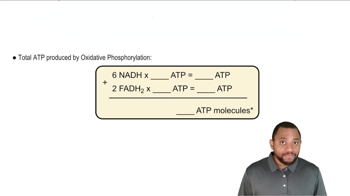Consider the complete oxidation of arachidic acid, a saturated fatty acid, [20:0].
b. How many cycles of β oxidation occur?
 Verified step by step guidance
Verified step by step guidance Verified video answer for a similar problem:
Verified video answer for a similar problem:



 1:29m
1:29mMaster Oxidation of Fatty Acids Concept 1 with a bite sized video explanation from Jules
Start learning